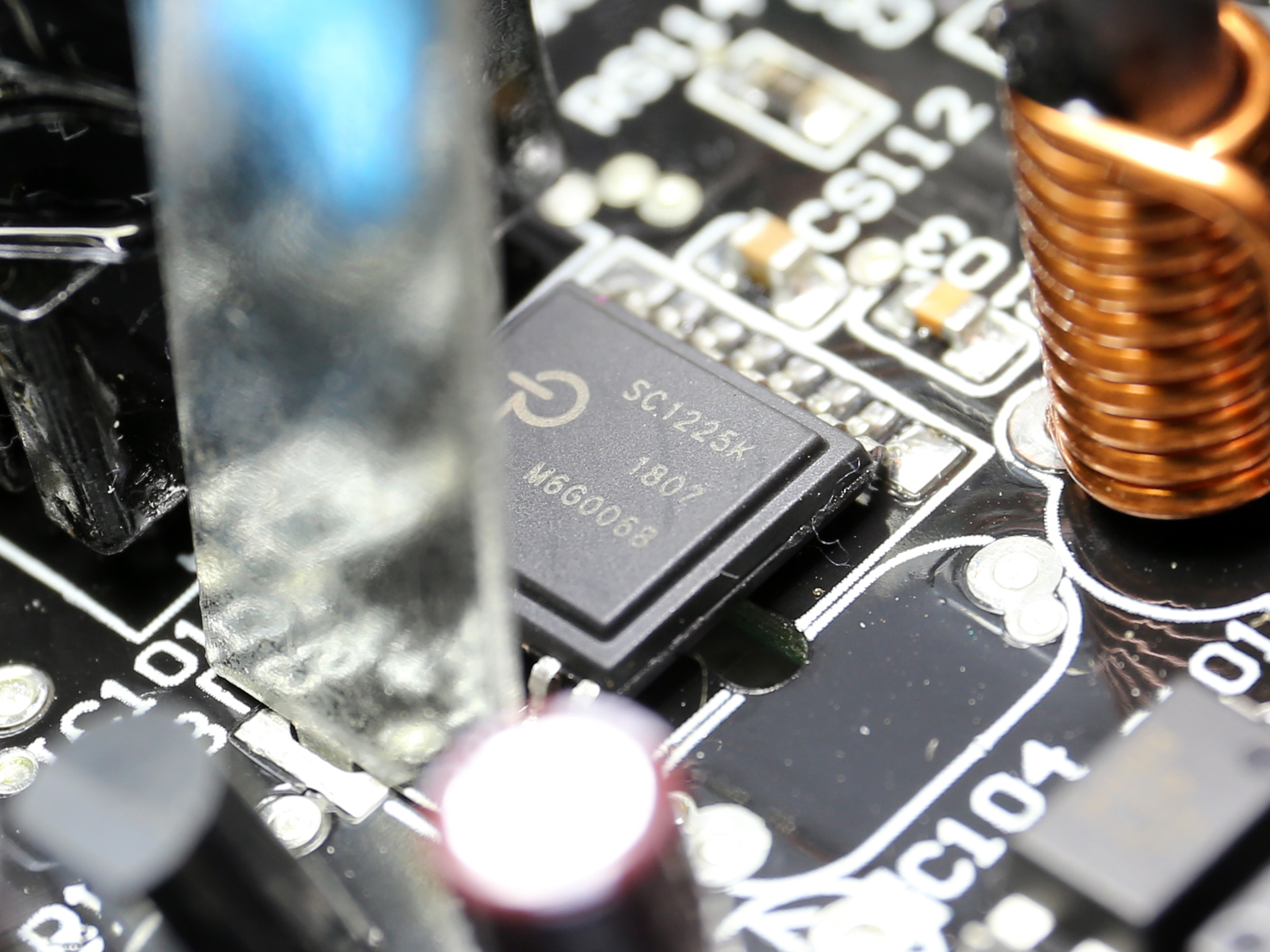FSP Hydro PTM 650W PSU Review: Clean, Quiet Power for Mid-Range PCs
Why you can trust Tom's Hardware
Teardown and Component Analysis
Before proceeding with this page we strongly encourage you to a look at our PSUs 101 article, which provides valuable information about PSUs and their operation, allowing you to better understand the components we're about to discuss.
| General Data | |
|---|---|
| Manufacturer (OEM) | FSP |
| Platform Model | PTM |
| Primary Side | |
| Transient Filter | 4x Y caps, 2x X caps, 2x CM chokes, 1x MOV, 1x SEN013DG |
| Inrush Protection | NTC thermistor & relay |
| Bridge Rectifier(s) | 1x GBJ1506 (600V, 15A @ 100°C) |
| APFC MOSFETs | 2x STMicroelectronics STFH24N60M2 (650V, 12A @ 100°C, 0.19Ω) |
| APFC Boost Diode | 1x STMicroelectronics STPSC6H065D (650V, 6A @ 110°C) |
| Hold-up Cap(s) | 2x Nichicon GG (450V, 270uF each or 540uF combined, 2000h @ 105°C) |
| Main Switchers | 2x STMicroelectronics STFH24N60M2 (650V, 12A @ 100°C, 0.19Ω) |
| Driver IC | 1x Silicon Labs Si8233BD |
| APFC Controller | Infineon ICE2PCS02 Supporting IC: Fairchild KA393 |
| Resonant Controller | Champion CM6901T2X |
| Topology | Primary side: Half-bridge & LLC resonant controller Secondary side: Synchronous rectification & DC-DC converters |
| Secondary Side | |
| +12V MOSFETs | 2x Toshiba TPHR85 04PL (SOP Advance Series, 40V, 150A @ 25C, 0.85mΩ ) |
| 5V & 3.3V | DC-DC Converters: 6x Infineon BSC0901NS (30V, 94A @ 100°C, 1.9mΩ) PWM Controller: APW7159C |
| Filtering Capacitors | Electrolytics: 6x KZE (1-5000h @ 105°C), Rubycon ZLH (6-10,000h @ 105°C) Polymers: Teapo (Taiwan) |
| Supervisor IC | SITI PS223 (OCP, OTP, OVP, UVP, SCP, PG) |
| Fan Model | Protechnic Electric MGA13512HF-A25 (135mm, 12V, 0.28A, FDB) |
| 5VSB Circuit | |
| Rectifier | International Rectifier IRFR1018E (60V, 56A @ 100°C, 8.4mΩ) |
| Standby PWM Controller | Power Integrations SC1225K |
Although this is a new platform, we wouldn't call its implementation particularly clean. A number of cables are used to transfer power between components and circuits. Ideally, those would be replaced by bus bars and wide PCB traces in order to minimize energy losses and avoid blocking airflow through the PSU.

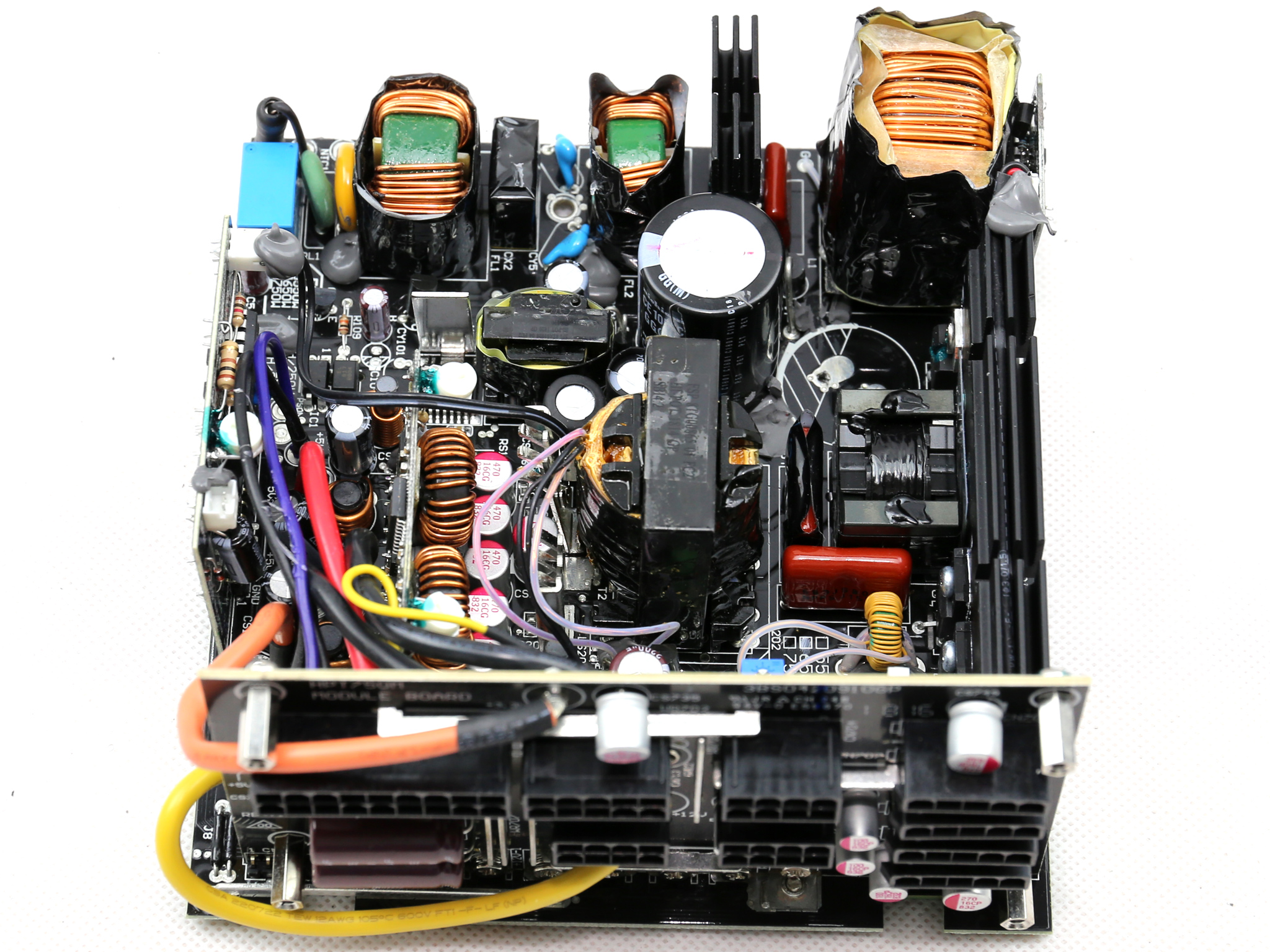
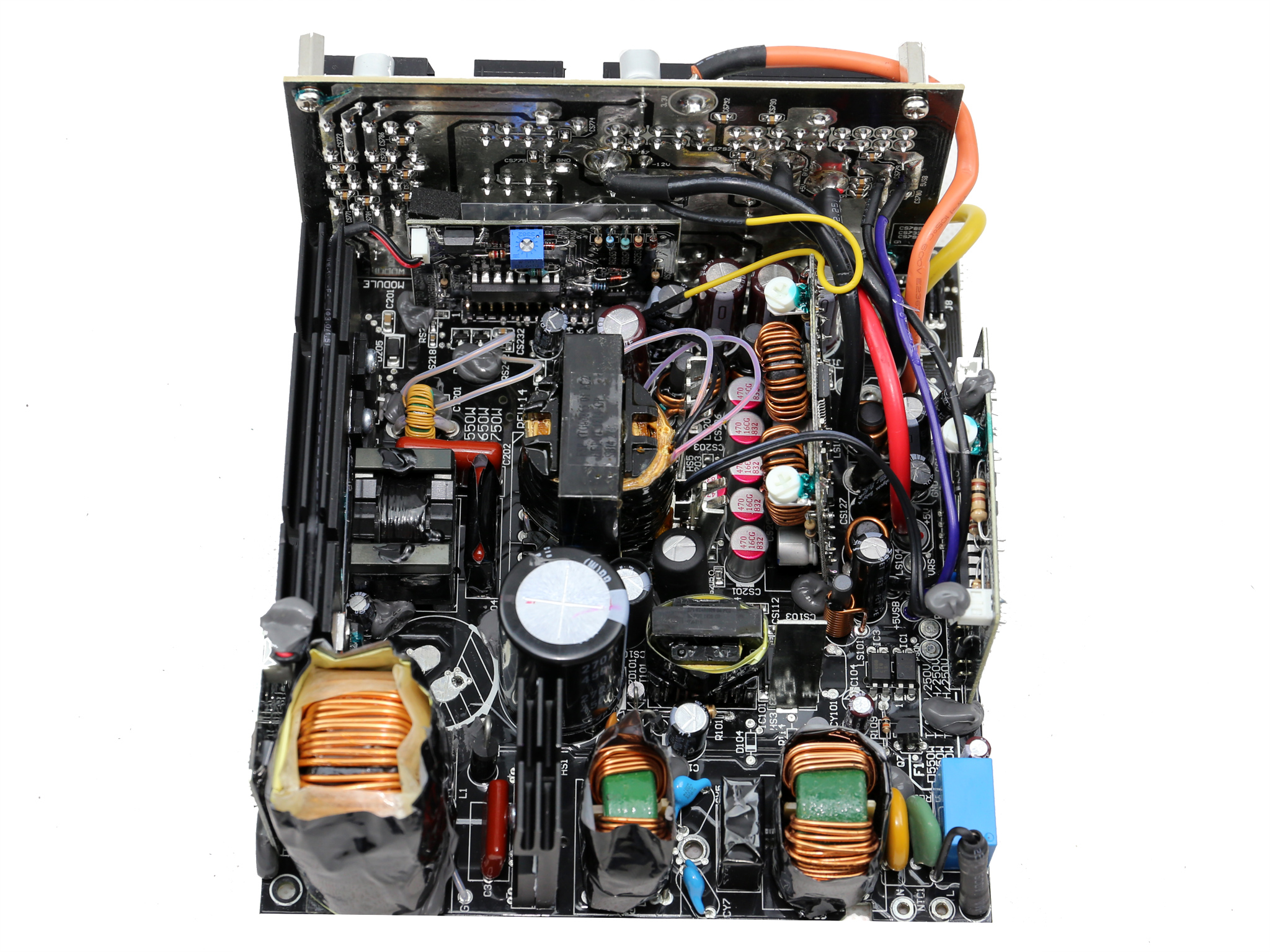

The primary side hosts a half-bridge topology, along with an LLC resonant converter. On the secondary side, there's a synchronous design with two FETs regulating the +12V rail. A couple of DC-DC converters are also used to generate the minor rails.
The filtering caps come from Japanese and Taiwanese manufacturers. Given the HPT650M's price, however, all of the capacitors should be Japanese. At least FSP uses a high-quality fan with a fluid dynamic bearing that should last a long time.
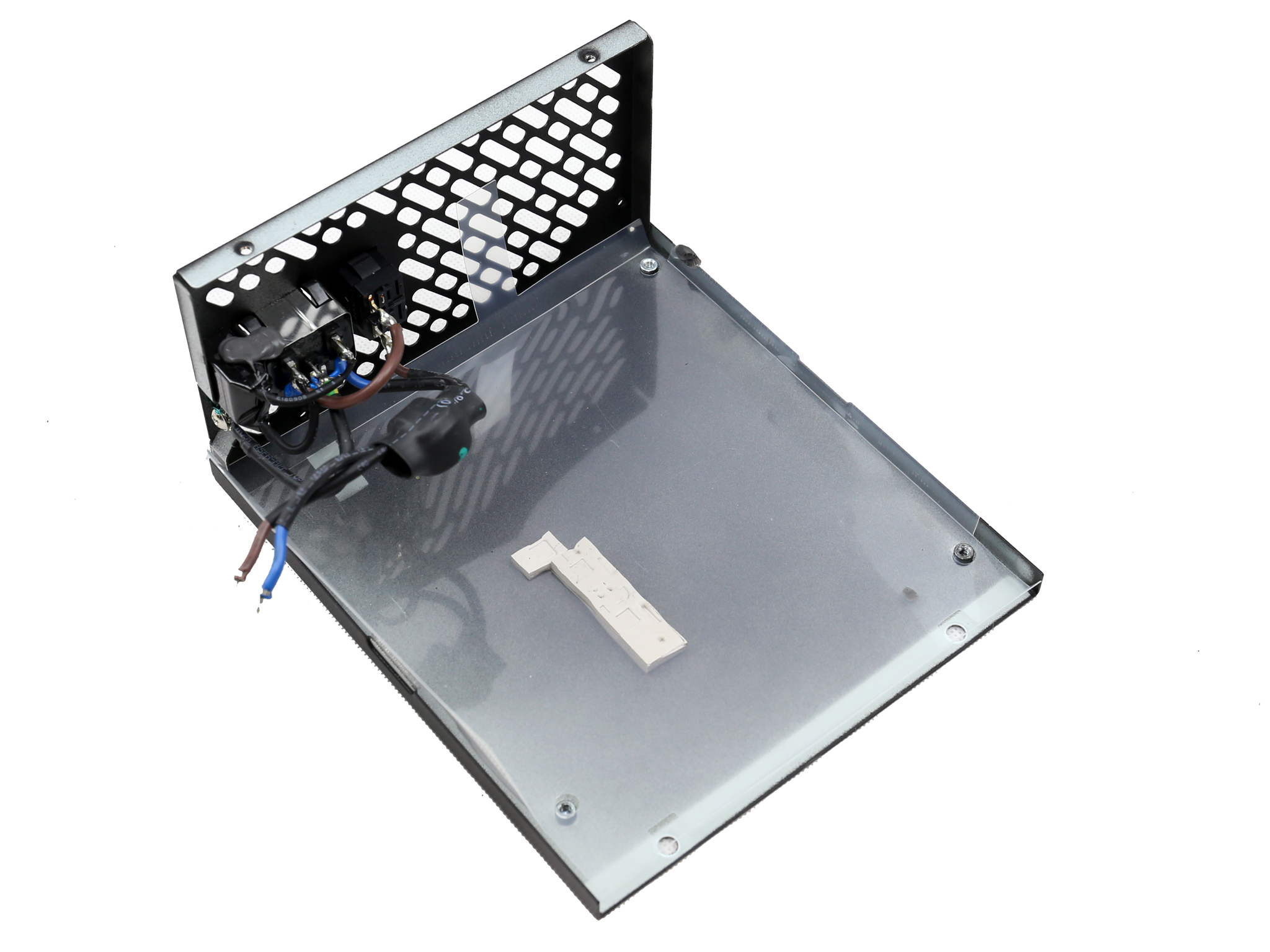



The first part of the transient filter, including one X cap and two Y caps, is right behind the AC receptacle. It continues on the main PCB with the same number Y and X caps, along with two CM chokes, an MOV, and a SEN013DG disconnect IC that cuts off the APFC converter during standby to restrict vampire power.
The NTC thermistor and its bypass relay, which is responsible for protecting against large inrush currents, are located next to the Metal Oxide Varistor (MOV).
Strangely enough, a single GBJ1506 bridge rectifier is used. We usually find a pair of them in similar-capacity, high-end PSUs.
Get Tom's Hardware's best news and in-depth reviews, straight to your inbox.




Two STMicroelectronics STFH24N60M2 FETs and a single STPSC6H065D boost diode are used by the APFC converter. The bulk caps are two Nichicons (GG series) with 540uF combined capacity. Unfortunately, they don't provide a long enough hold-up time to satisfy the ATX specification's requirements.
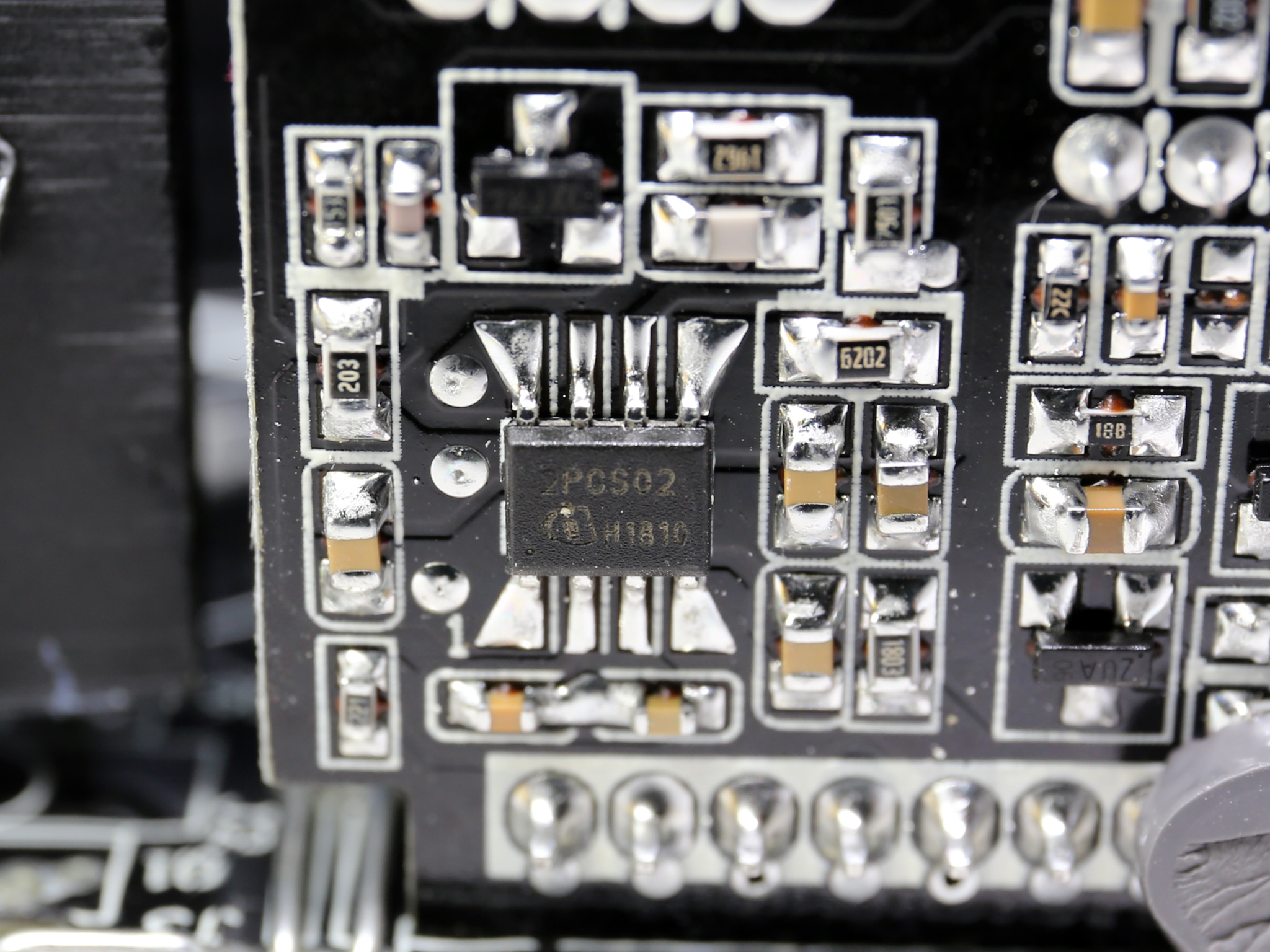

A Fairchild KA393 differential comparator supports the ICE2PCS02 APFC controller.

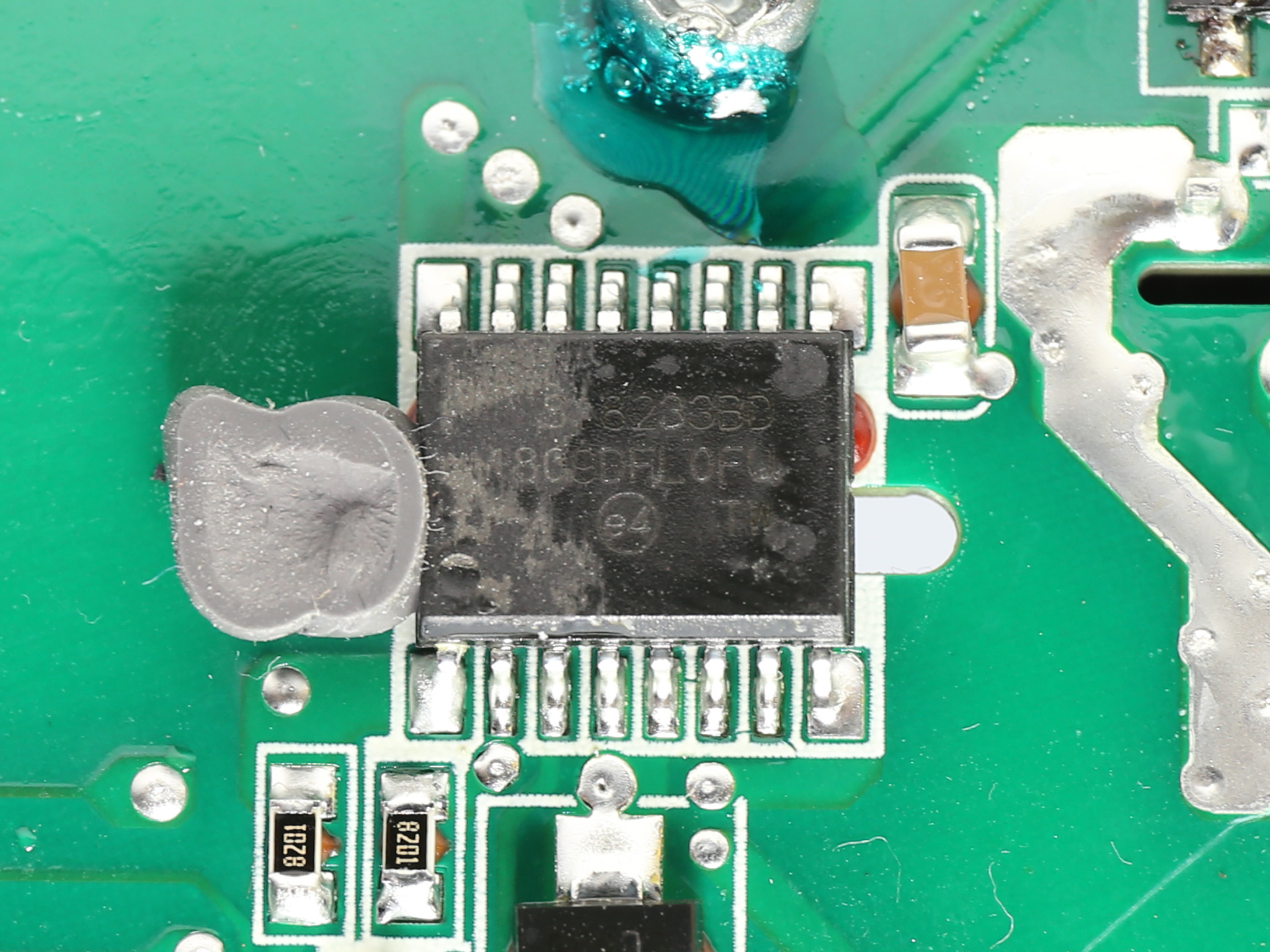

The main switching FETs are STMicroelectronics STFH24N60M2s arranged in a half-bridge topology. An LLC resonant controller is also used to boost efficiency. The driver IC for the main FETs is a Silicon Labs Si8233BD, and the resonant controller is a Champion CM6901T2X.
This is a picture of the unit's main transformer.


A pair of Toshiba TPHR85 04PL FETs installed on the PCB's solder side rectify the +12V rail. Two small heat sinks right above them help with cooling. This rail's ripple filtering is handled by several Chemi-Con and Rubycon electrolytic caps. A number of Teapo polymer caps assist as well.


The VRMs that handle the minor rails use a total of six Infineon BSC0901NS FETs. The common PWM controller is an Anpec APW7159C.
A Power Integrations SC1225K IC serves as the standby controller. Meanwhile, the 5VSB circuit uses an International Rectifier IRFR1018E FET.
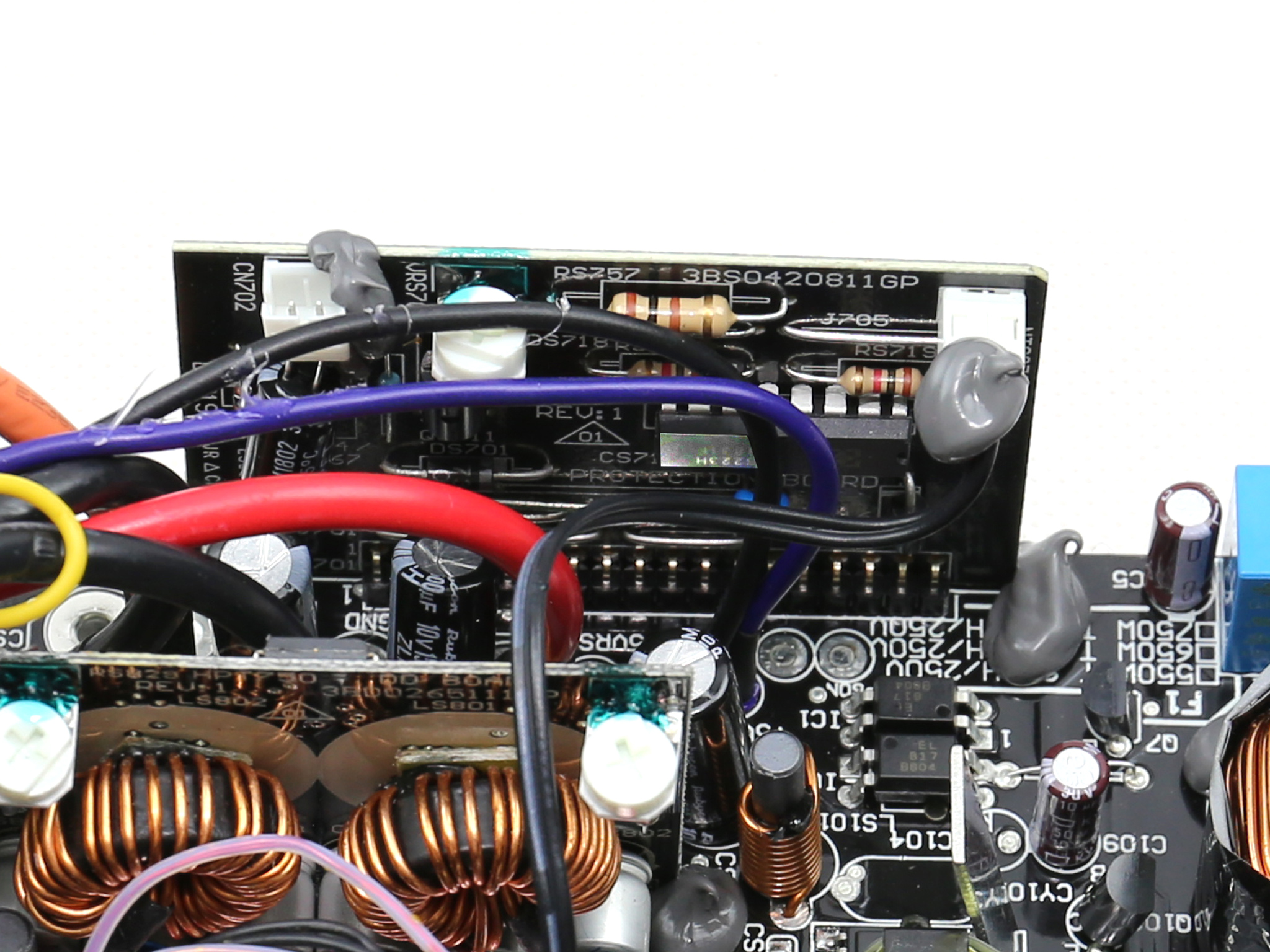
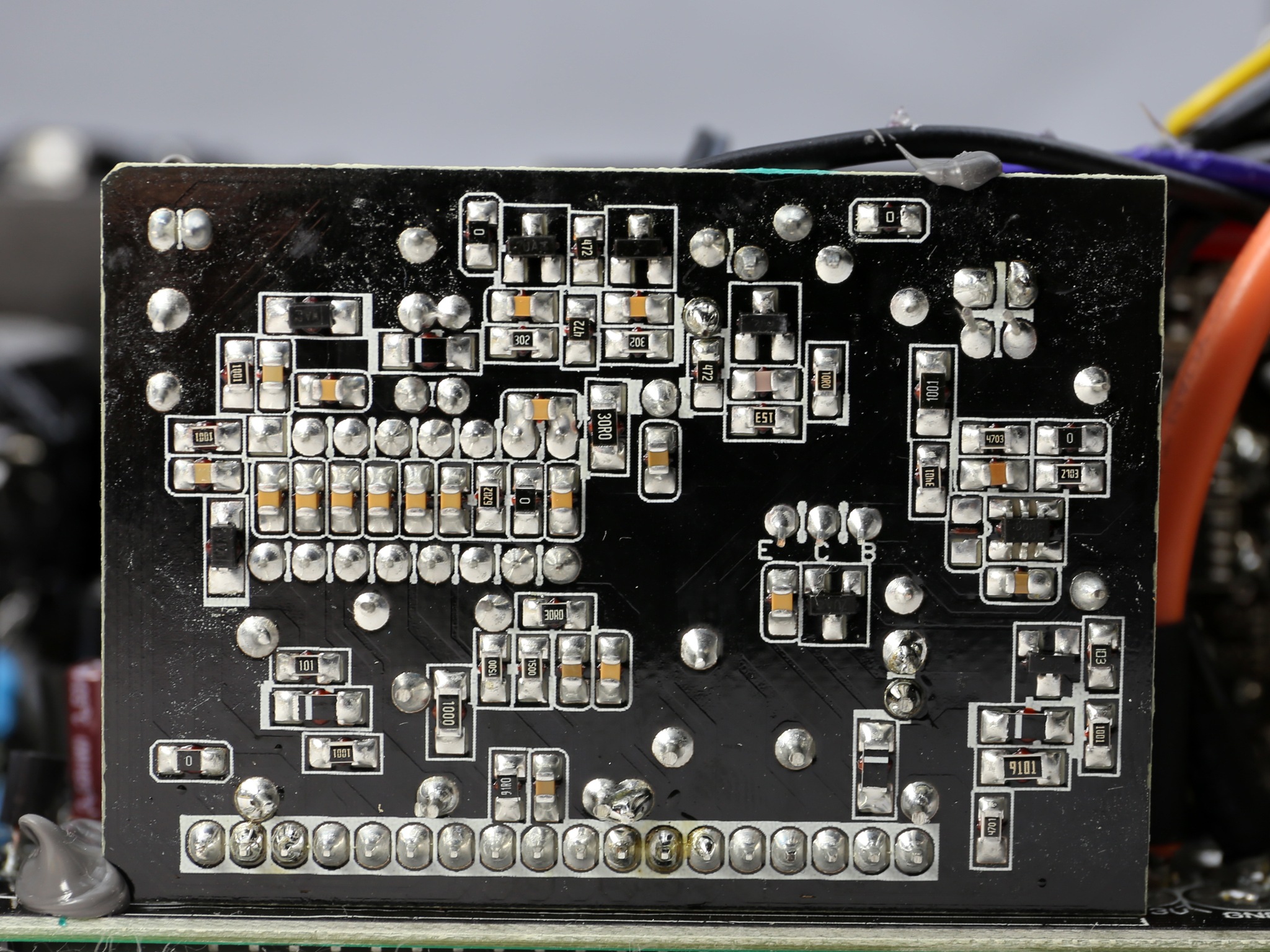
The supervisor IC is a SITI PS223. It provides over-temperature protection right out of the box.
A pair of KZE caps, along with a number of Teapo polymer caps, provide an extra ripple filtering stage on the modular board's front side.
We don't like those two thick cables transferring the +12V and 3.3V rails, though. Beyond increased power losses under high loads, those cables also restrict airflow inside of the PSU. FSP should avoid using them.






In some spots, the solder joints aren't particularly good. We also spotted long component leads all over the board. This is not FSP's best work, that's for sure.


The high-quality MGA13512HF-A25 fan uses a fluid dynamic bearing and measures 135mm across. It is driven by a fairly conservative speed profile.
MORE: Best Power Supplies
MORE: How We Test Power Supplies
MORE: All Power Supply Content
Current page: Teardown and Component Analysis
Prev Page Unboxing Video Next Page Load Regulation, Hold-Up Time and Inrush Current
Aris Mpitziopoulos is a contributing editor at Tom's Hardware, covering PSUs.



